Driedger, 22, is on the ice for the Senators morning skate and Craig Anderson is not. This suggests something is up with Anderson and Driedger will serve as Mike Condon’s backup tonight. Stay tuned.

Driedger, 22, is on the ice for the Senators morning skate and Craig Anderson is not. This suggests something is up with Anderson and Driedger will serve as Mike Condon’s backup tonight. Stay tuned.

Tynan failed to record a point while firing three shots in 7:29 TOI/GM in his first three NHL games during his call-up. With Matt Calvert (oblique) ready to play on Monday, Tynan returns to the AHL where he has seven goals and 23 assists (30 points) in 55 games.

Salomaki, 24, hasn’t played in the NHL since October 15th and played four games with Milwaukee (AHL) as he worked his way back from a lower-body injury. He had one goal in four games with the Admirals and has 11 points (6G / 5A) in 64 career NHL games.
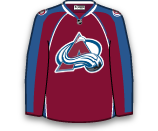
Archibald, 24, has recorded 14 goals and 13 assists (27 points) in 57 games with Wilkes-Barre/Scranton this season. He has two goals in two NHL games this year and could draw into the lineup tonight with Carl Hagelin out for one month.

Peca, 23, played 10:39 TOI on Saturday, but will swap places with Byron Froese and heads back to Syracuse where he has 30 points (8G / 22A) in 53 games.

Froese, 26, was a part of the Brian Boyle trade that sent the forward to Toronto. Froese has two goals and one assist in two games with Syracuse since the trade, which gives him 26 goals and 16 assists (42 points) in 50 AHL games this season. He is expected to make his Lightning debut on Monday.

Andersson, 20, was a second round pick (No.53 overall) in 2015 and has earned his first NHL call-up. Andersson has recorded three goals and 19 assists (22 points) in 50 AHL games this season. He could make his NHL debut on Saturday with Dougie Hamilton and Michael Stone listed as questionable.

The Lightning are riddled with injuries so Peca has been recalled and should draw into the lineup on Saturday. Peca has one goal and one assist in nine games with the Lightning this season and 30 points (8G / 22A) in 53 AHL games.

Henrik Lundqvist is out for 2-3 weeks, so Hellberg has been recalled to serve as Antti Raanta’s backup. Hellberg has gone 11-11-2 with a 2.91 GAA and .902 SV% in 31 games with Hartford this season.

Halverson was brought up to be Antti Raanta’s backup on Thursday, but his return to the ECHL suggests that Henrik Lundqvist will be ready to go on Sunday or Monday.

Dumba missed the last two games, including last night’s contest with an illness, but is set to go on the tail-end of the Wild’s Florida back-to-back. Dumba is expected to replace Gustav Olofsson in the lineup and enters play with 25 points (7G / 18A) in 59 games this season.

There are reports that Mark Stone suffered an injury in last night’s game against the Coyotes and that is why Varone has been recalled. The 26-year-old forward has not made an impact in six games with the Senators this season, but has 42 points (13G / 29A) in 51 games to lead Binghamton this season.
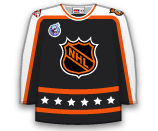

Halverson, 20, was a second round pick (No.59 overall) in 2014 and turned pro this season after spending three years with Sault Ste. Marie (OHL). Halverson has gone 9-14-0 with a 3.40 GAA and .886 SV% in 24 games with Hartford (AHL) and 3-1-0 with a 1.70 GAA and .943 SV% in four games with the Swamp Rabbits. He will serve as Antti Raanta’s backup with Henrik Lundqvist (lower-body) day-to-day.

Zykov, 21, was a second round pick of the Kings (No. 37 overall) in 2013 and it looks like he could make his NHL debut on Thursday. Zykov has recorded 15 goals and 15 assists (30 points) in 55 games with the Checkers this season. He is expected to play on the Hurricanes’ top line with Jordan Staal and Sebastien Aho.
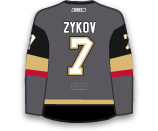
Howard’s conditioning stint stopping 31 of 33 shots in a 5-2 win over Texas on Saturday and posted a 21-save shutout against San Antonio on Tuesday. Howard’s conditioning stint was a success and he should start Friday vs. Chicago or Sunday vs. the Rangers.
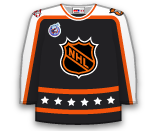
Labanc was a healthy scratch on Monday and will go back to the Barracuda with Joonas Donskoi healthy. Labanc has five goals and 10 assists (15 points) in 10 AHL games this season.

The Penguins are in Winnipeg to take on a heavy Jets team, so Gaunce has been recalled and could draw in on the third pair. The 6-foot-1, 203 lbs. defenseman has two assists in six games with Pittsburgh this season.

The Penguins are in Winnipeg to take on a heavy Jets team, so Sestito has been recalled and will likely draw in on the fourth line. The 6-foot-5, 228 lbs. winger has one assist and 24 PIMS in eight games with the Penguins this season. The 29-year-old has 16 points (6G / 10A) in 33 games with Wilkes-Barre/Scranton.
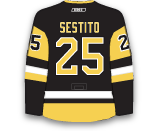
Czarnik, 24, had 13 points (5G / 8A) in 47 games with the Bruins this season, but was sent to Providence in late February. In seven games with the “baby Bruins” the centre registered two goals and six assists (eight points). He is expected to draw into the lineup on Wednesday because Ryan Spooner is out with a concussion.
